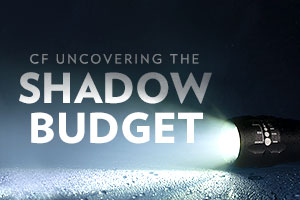Media

Restoring State Budget Transparency
A House appropriations subcommittee hosted a hearing last week on Pennsylvania’s tax structure and fiscal policy. One of the issues highlighted – Pennsylvania’s lack of state budget transparency.
Robert P. Strauss, professor of Economics and Public Policy at Carnegie Mellon University, addressed this issue in a detailed analysis of Pennsylvania’s financial practices. According to Professor Strauss, the commonwealth has seen a decline in financial transparency since the 1970s:
As is evident, in 1973, 51% of overall state spending was through the General Fund; however, that proportion collapsed between 1990 and 1992 to 40%, and has been about 31% since 2011.
Professor Struass’s findings are unsurprising considering the state’s massive shadow budget, a collection of more than 150 special funds. In total, the shadow budget accounts for approximately 60 percent of Pennsylvania’s entire operating budget. The General Fund comprises the other 40 percent.
Taxpayers deserve to know how government spends their money. Yet, this unfair arrangement hides a bulk of total spending from public view.
Shining a light on the shadow budget would foster more transparency and the better use of taxpayer dollars.
Policymakers can improve transparency in two primary ways:
- Move the various special funds into the General Fund, allowing the legislature to control the appropriation of these tax dollars.
- Require status reports on the balances in these special funds. Such reports could detail all expenses in a given fund, including how they will affect a fund’s balance.
The second recommendation is particularly important given the debate over how much money sits in the state’s shadow budget accounts. If the Wolf Administration is arguing that the vast majority of these funds are committed, then lawmakers and the public deserve evidence.
Before implementing another tax increase on working people, lawmakers should have the tools to scrutinize the use of each tax dollar throughout state government.